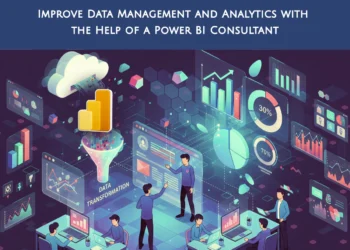Artificial Intelligence (AI) connectivity signifies an era where technology interacts seamlessly, augmenting human capabilities and transforming the fabric of society. This advanced interconnectivity not only enables devices to communicate more effectively but also allows for the streamlined integration of AI-driven insights into everyday decisions. As AI continues to evolve, understanding its connectivity becomes essential for businesses and individuals alike. With the right knowledge, you can leverage its power to foster innovation and gain a competitive edge. Below, we delve into the essential elements of AI connectivity and its profound influence on technology and daily life.
Understanding AI Connectivity and Its Impact on Today’s Technology Landscape

AI connectivity refers to the integration of intelligent systems, machines, and services that exchange data in real time, forming the foundation of smart cities, autonomous tech, and personalized experiences. By combining AI with the Internet of Things (IoT), this advanced networking accelerates innovation across industries, from predictive maintenance in manufacturing to early diagnostics in healthcare.
Understanding how to use AI connectivity with tools like BA Insight is key for businesses aiming to stay competitive. This technology streamlines operations, enhances decision-making, and reduces costs through automation and real-time analytics. To unlock its full potential, companies must learn how to integrate AI into their existing systems for smarter, more adaptive networks.
Exploring the Building Blocks of AI: Machine Learning, Neural Networks, and Data Analytics
AI connectivity is driven by core technologies like machine learning, neural networks, and data analytics. Machine learning enables systems to learn from data and improve performance over time without explicit programming. Neural networks, modeled after the human brain, support advanced pattern recognition and problem-solving, powering tasks like object detection, speech transcription, and language translation.
Data analytics refines large volumes of data into actionable insights, allowing organizations to predict needs and deliver personalized services. These technologies collectively enhance user experience by enabling smarter systems. To fully harness their potential, it’s essential to understand both their capabilities and limitations, encouraging continuous exploration and innovation in the digital space.
Implementing AI Connectivity in Everyday Life: Smart Devices and IoT
AI connectivity has expanded beyond industrial settings into everyday life through smart devices like home automation systems, wearables, and personal assistants. These technologies use AI’s predictive features to enhance user experience. The Internet of Things (IoT) plays a key role by enabling detailed data collection through sensors, allowing AI to deliver personalized and efficient outputs.
Examples include smart thermostats that adjust based on user habits and fitness trackers that offer tailored health insights. This integration promotes convenience, efficiency, and sustainability by automating tasks and reducing waste. However, as these systems become more common, users must understand their functions to ensure secure and effective integration into their connected environments.
Navigating the Challenges and Security Considerations in AI Integration

AI connectivity brings significant advantages but also presents notable challenges. One major concern is the heightened risk to security and privacy due to the increased exchange and storage of sensitive data. As systems become more interconnected, the chances of breaches and malicious activities rise. Organizations must enforce strong security measures, including advanced encryption, continuous monitoring, and strict access controls, making a CompTIA Security+ certification essential for professionals securing AI-driven systems.
Transparent data practices and regulatory compliance are essential to uphold user trust. Ethical concerns also emerge, particularly around automated decision-making, where biases must be minimized through thoughtful system design and regular oversight. Staying updated on evolving threats and security strategies is crucial in managing the complexities of AI integration.
Future Trends: How AI Connectivity Will Shape Our World in the Coming Years
AI connectivity is advancing toward a future where intelligent systems seamlessly enhance daily life. As AI becomes more sophisticated, industries are being reshaped through personalized, anticipatory services such as autonomous transport and tailored healthcare. The rise of edge computing enables faster, localized data processing, improving real-time responsiveness.
Quantum computing may soon elevate AI performance to solve previously unsolvable problems. Artificial General Intelligence (AGI), capable of human-like reasoning across domains, remains a future milestone with transformative potential. Preparing for this shift involves investing in AI literacy and infrastructure through education and strategic collaboration to support a society increasingly driven by intelligent, interconnected technologies.
Altogether, the integration of AI connectivity into our lives signals a transformative chapter in human innovation. It presents a fascinating array of opportunities and challenges that will define the future of work, leisure, and interaction, shaping a world that is more intelligent, efficient, and interconnected than ever before.








